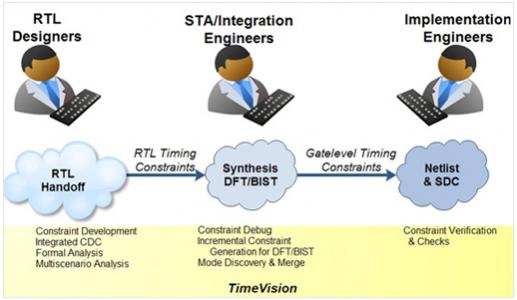I met Sam Appleton of Ausdia during DAC. I found it quite hard to understand exactly what they do. I’ve talked before about something that I nick-named City Slickers’ Marketing. It is named after the following exchange from the movie City Slickers:Curly: Do you know what the secret of life is? [holds up one finger] This.
Mitch: Your finger?
Curly: One thing. Just one thing. You stick to that and the rest don’t mean shit.
Mitch: But, what is the “one thing?”
Curly: [smiles]That’s what you have to find out.
Sometimes this amounts to making sure that you have the right product and sometimes this means making sure that you have the right explanation and positioning. If you can’t have a good elevator pitch to a VP engineering at a customer then your product is going to be hard and timeconsuming to sell (and by the way, talking of elevator pitches, Sand Hill Road doesn’t really have elevators since there are no towers).
Ausdia has some of this latter problem. What they do, the niche they fill, is hard to explain simply. I think I get it but I’m not completely sure.
 Timevision is a product used along with a static timing tool (such as Synopsys’s PrimeTime). The reality is that a modern design has tens if not hundreds of millions of instances, power down regions, multiple clock domains, scan test and more. If you don’t have a completely solid set of timing constraints, a good understanding of the clock architecture, power architecture, false paths and so on then you are going to end up with gigabytes of data that is pretty much impossible to interpret.
Timevision is a product used along with a static timing tool (such as Synopsys’s PrimeTime). The reality is that a modern design has tens if not hundreds of millions of instances, power down regions, multiple clock domains, scan test and more. If you don’t have a completely solid set of timing constraints, a good understanding of the clock architecture, power architecture, false paths and so on then you are going to end up with gigabytes of data that is pretty much impossible to interpret.
Timevision is a tool to address this that adds intelligence into how the static timing tool is driven. It can deduce a lot from just examining the netlist but the more information you give it the more powerful it gets and the more useful the output from STA will be. Under the hood it has formal techniques for deducing what is going on in your design without having to be told everything. So instead of having to write thousands of lines of timing constraints, they are synthesized and deduced from the design itself along with a small amount of steering information.
A particular challenge with static timing is that a lot is done right at the end of the design. Problems here don’t have any schedule flexibility to make up for time lost while closing timing for the design. So it is doubly important to make sure that you have good constraints by the time tapeout approaches.
Ausdia is a privately held company, obviously. Less obviously it has no external investors and has been completely bootstrapped. It was formed in late 2006 and started product development in 2008 (who knows what they did in 2007!) and brought their first product to market in 2010. Since then they have survived on product revenue.
Share this post via:







Speculative Execution: Rethinking the Approach to CPU Scheduling